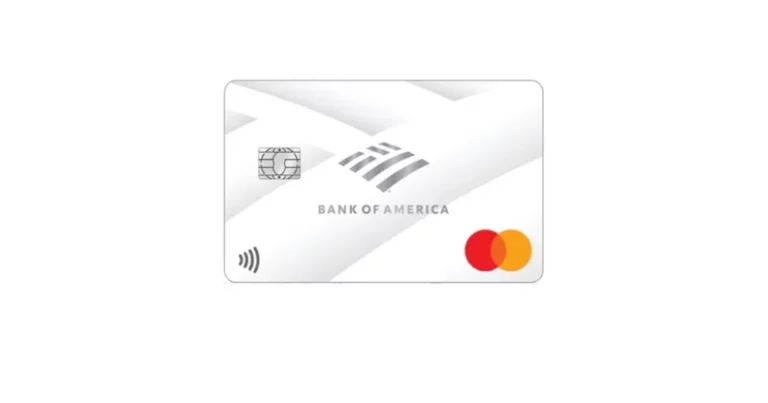Monthly Money Check-In: A Simple Routine to Stay Financially Fit
Anúncios
Monthly Money Check-In: A Simple Routine to Stay Financially Fit

Financial health isn’t just about how much money you earn — it’s about how well you manage what you have. Just like a regular workout keeps your body in shape, a consistent money check-in keeps your finances aligned with your goals. In 2025, when digital spending is seamless and financial distractions are constant, building a monthly money routine is one of the smartest habits you can adopt.
This guide offers a practical and effective monthly routine to monitor your budget, track progress, and make small tweaks before little issues turn into major problems. Whether you’re a beginner or already good with money, this check-in will help you stay financially strong with less stress and more clarity.
Anúncios
Why a Monthly Money Check-In Matters
Regularly reviewing your finances helps you:
-
Spot overspending early
-
Stay on track with savings or debt goals
-
Align spending with your values and priorities
-
Reduce money-related anxiety by knowing exactly where you stand
-
Make smarter financial decisions throughout the month
Many people avoid looking at their finances out of fear or shame. But awareness is the first step toward control. A monthly check-in turns the unknown into actionable insights.
Anúncios
Step 1: Schedule a Regular Time
Pick one day each month for your check-in — and treat it like a non-negotiable appointment. Some people choose the first or last day of the month or align it with their payday.
Consistency is key. Set a reminder on your phone or calendar. Choose a time when you’re not in a rush, and make it enjoyable — light a candle, play music, or grab your favorite coffee.
Time needed: 30–60 minutes per month.
Step 2: Review Your Budget or Spending Plan
Compare your actual spending with what you planned. If you don’t have a budget yet, use this time to create one for the upcoming month.
Ask yourself:
-
Did I stick to my budget this month?
-
Which categories were over or under?
-
Are there expenses I can cut or adjust next month?
-
Were there any unexpected costs that threw things off?
Use tools like Mint, YNAB, Monarch Money, or a simple spreadsheet. The goal isn’t perfection — it’s awareness and alignment.
Example: You budgeted $400 for groceries but spent $550. Was it due to price increases, special events, or poor planning? Adjust accordingly.
Step 3: Track Your Income and Bills
Review all income received this month (salary, freelance gigs, passive income), and confirm that all bills were paid on time.
Checklist:
-
All income sources accounted for
-
Rent/mortgage paid
-
Utilities and subscriptions covered
-
Credit card payments made
-
Debt payments on track
-
No missed due dates
This prevents late fees, protects your credit score, and ensures you don’t overspend based on inaccurate income assumptions.
Step 4: Check Bank and Credit Card Balances
Log into your accounts and note your current balances:
-
Checking and savings accounts
-
Credit cards
-
Investment accounts
-
Retirement funds
-
Digital wallets (e.g., Venmo, PayPal)
Look out for surprises like duplicate charges or forgotten subscriptions. Catching issues early gives you time to fix them.
Step 5: Monitor Your Net Worth

Net worth = Total assets – Total liabilities.
Even if you’re starting with a negative net worth, tracking it monthly is incredibly motivating. As you pay off debt and grow your savings, you’ll see steady progress.
Use a spreadsheet or net worth tracker to update:
Assets:
-
Cash
-
Savings
-
Investments
-
Retirement accounts
-
Property
Liabilities:
-
Credit card balances
-
Student loans
-
Auto loans
-
Mortgages
Don’t obsess over market fluctuations — especially with investments. What matters is consistent tracking and long-term trends.
Step 6: Check Progress on Financial Goals
Whether you’re saving for an emergency fund, vacation, home, or debt payoff — review how far you’ve come this month.
Ask yourself:
-
Did I meet my savings or debt repayment targets?
-
Can I increase contributions next month?
-
Do I need to adjust timelines or expectations?
-
Are these goals still aligned with my priorities?
Example: If you aim to save $5,000 this year, that’s around $417/month. If you saved only $200 this month, figure out why — and how to get back on track.
Step 7: Reflect on Your Emotions Around Money
Money isn’t just numbers — it’s mindset. Spend a few minutes reflecting on how you felt about money this month.
Ask yourself:
-
What financial decisions made me proud?
-
Where did I feel stressed or out of control?
-
Did I spend in ways that align with my values?
-
What triggered any impulse purchases?
This emotional check-in builds self-awareness and helps shift habits over time.
Step 8: Plan for the Month Ahead
Based on your review, set your budget and intentions for the upcoming month.
Plan for:
-
Known irregular expenses (birthdays, holidays, car maintenance)
-
Budget adjustments (categories over/under)
-
New savings or debt targets
-
Changes in income or job situation
-
Financial tasks (filing taxes, opening a savings account, canceling subscriptions)
Also, look over your calendar for upcoming events, bills, or life changes that may affect your finances.
Step 9: Celebrate Small Wins
It’s easy to focus on what went wrong. Instead, end your check-in by celebrating what went right.
Examples:
-
Paid off a credit card? Big win.
-
Hit your monthly savings target? Nice work.
-
Spent less on takeout? Acknowledge it.
Celebration builds momentum. Progress — not perfection — is what counts.
Step 10: Take One Small Action
Before you wrap up, do one thing to move your finances forward.
Ideas:
-
Schedule an automatic savings transfer
-
Make an extra debt payment
-
Cancel an unused subscription
-
Compare insurance quotes
-
Set a new savings goal in your banking app
Small steps add up — and keep money management from feeling overwhelming.
Tips for Success
-
Use visuals: Charts and graphs help you spot trends and stay motivated.
-
Get an accountability buddy: Check in monthly with a friend or partner.
-
Use apps: Automate tracking to save time.
-
Be kind to yourself: Financial growth is a journey. Expect ups and downs.
-
Customize: Adapt the check-in to your lifestyle — some people prefer weekly or quarterly reviews.
Common Mistakes to Avoid
-
Skipping months: Even if it wasn’t a “good” month, skipping the review slows your growth.
-
Obsessing over every cent: Focus on big patterns, not micromanagement. Clarity, not control, is the goal.
-
Ignoring irregular expenses: Many budgets fail by overlooking seasonal or one-time costs. Plan ahead.
-
Overlooking emotional spending: If overspending is frequent, explore why — not just what.
Why Monthly Beats Annual
Annual reviews are great for long-term planning, but they won’t catch issues in time. Monthly check-ins offer real-time course correction, accountability, and momentum.
It’s like weighing yourself once a year vs. every month — regular feedback fuels positive change.
Real-Life Example: Jason’s Turnaround
Jason, a 29-year-old freelance designer, used to avoid checking his bank account. He felt anxious after every swipe and frequently overdrafted.
After committing to monthly check-ins, he started with just 30 minutes on the last Sunday of each month. In six months, he:
-
Built a $1,200 emergency fund
-
Paid off two credit cards
-
Started saving for a trip to Japan
-
Felt significantly less stressed about money
What changed wasn’t his income — it was his attention.
Final Thoughts

A monthly financial check-in is one of the most powerful money habits you can build. It brings structure to your spending, accountability to your goals, and peace of mind to your everyday life.
You don’t need to be perfect. You don’t need fancy tools. All you need is 30 to 60 minutes a month and a willingness to look at your numbers with curiosity — not judgment.
Start this month. Set the date, follow the steps, and watch how this simple practice transforms your financial well-being — one check-in at a time.

Post Comment